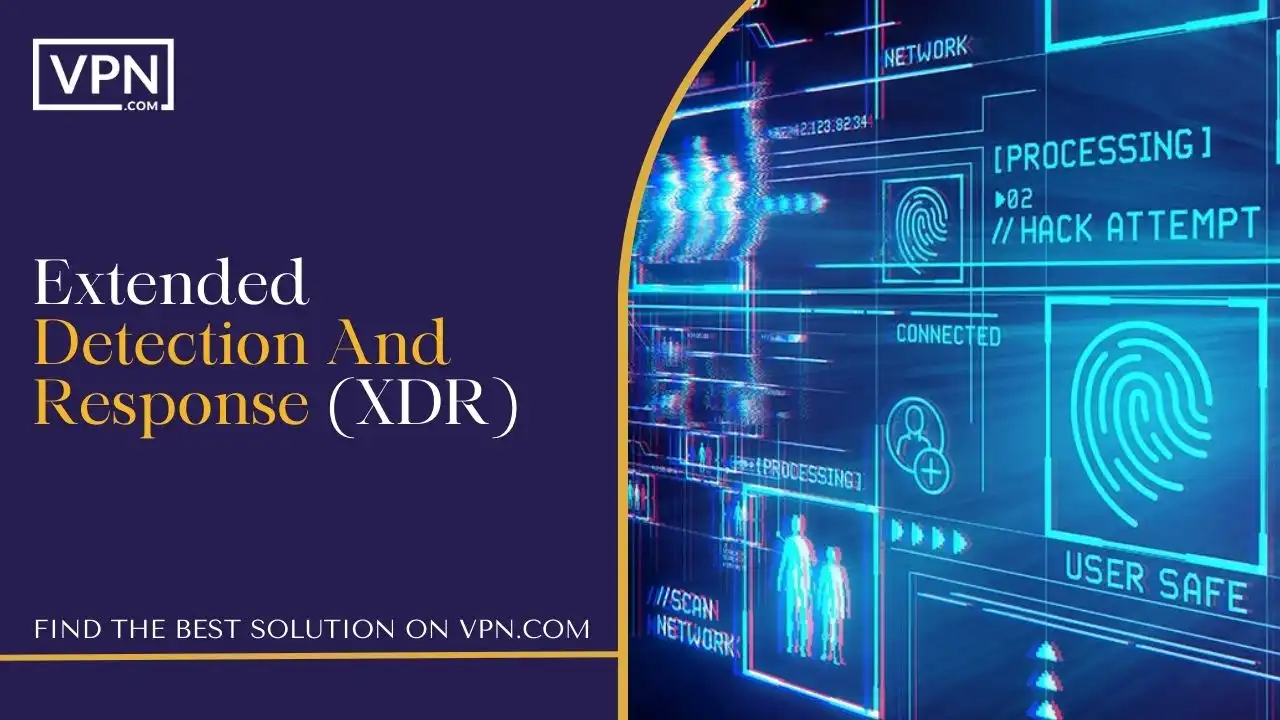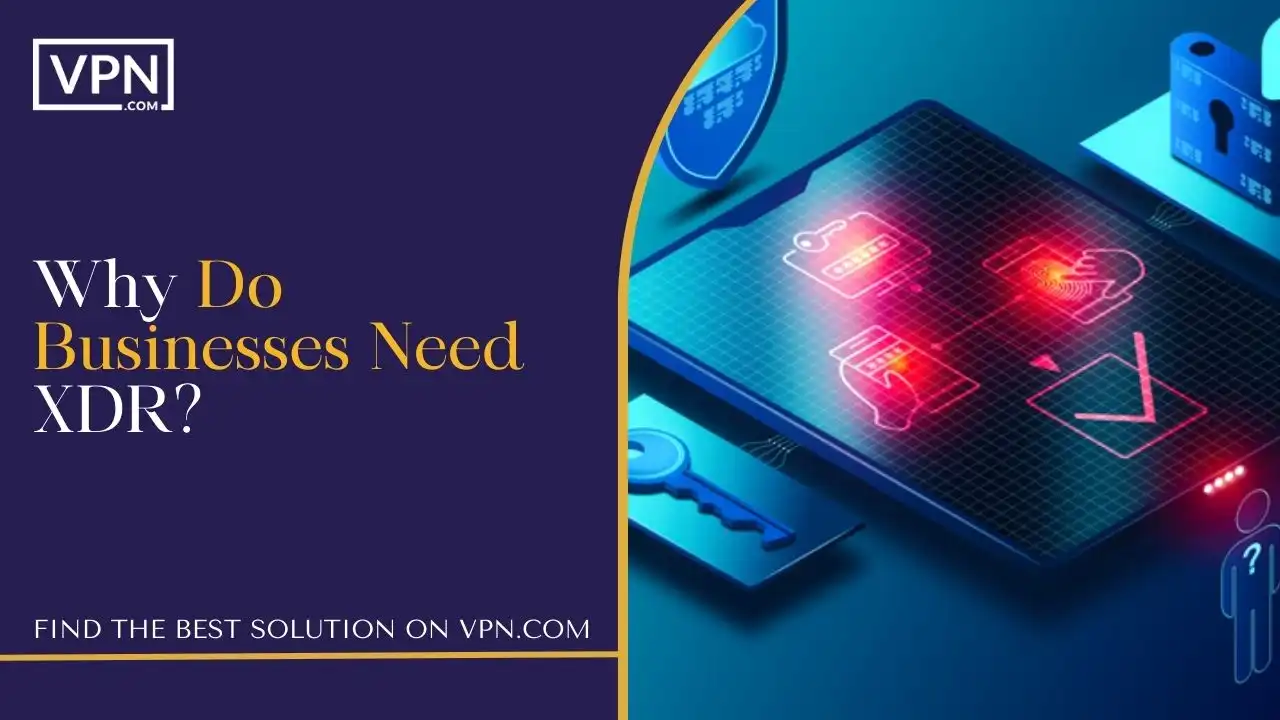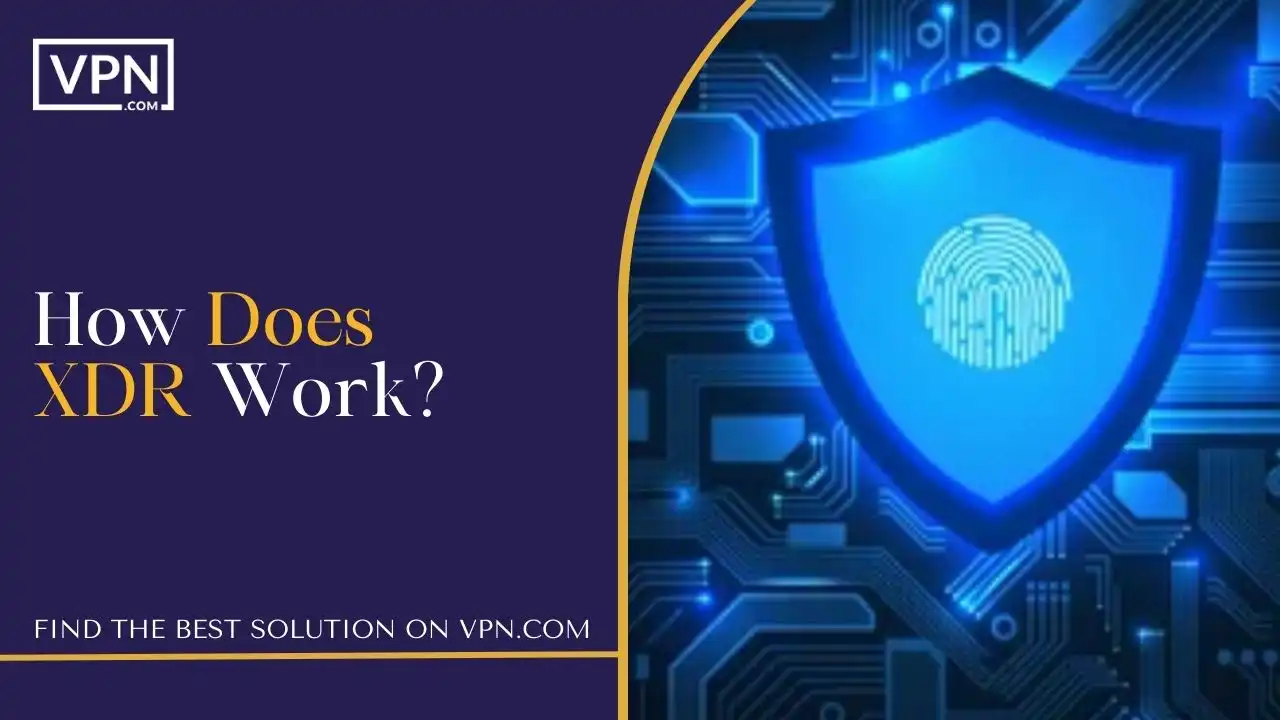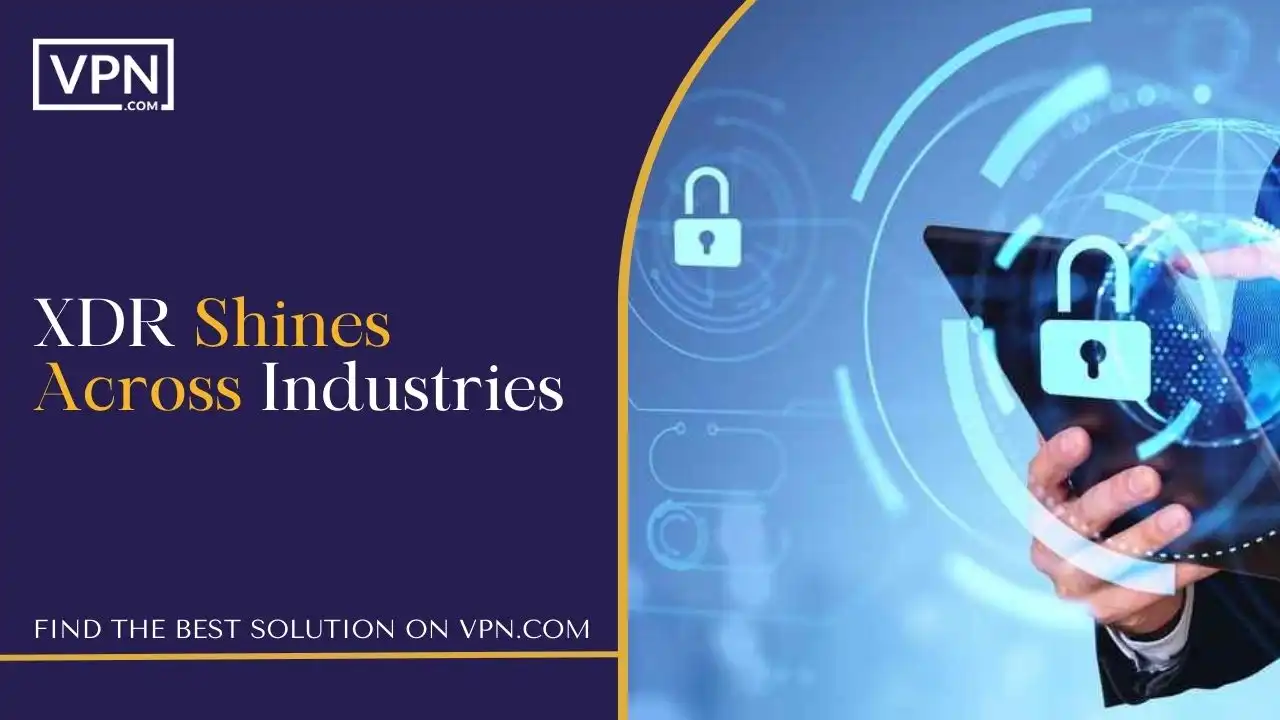Extended Detection And Response (XDR)

Cyber threats are growing more advanced by the day. To keep their data safe from harm, smart companies are embracing a powerful new security tool – the quickly rising star known as Extended Detection and Response (XDR).
This in-depth guide takes an engaging look at how XDR works, key ways it outshines traditional defenses, top provider options, and critical steps to put this cutting-edge protection into action across your systems. Let’s dive in!
What Is Extended Detection and Response?
In simple terms, Extended Detection and Response (XDR) acts as an all-knowing security command center for modern organizations. It combines intelligent threat detection, rapid response, and automation across various security layers like endpoints, networks, clouds, and more.
Put another way – XDR provides a bird’s eye view of potential dangers looming across vast digital ecosystems. Powerful AI and machine learning spot hidden red flags that point toward cyberattackers plotting their next move. Extended Detection and Response (XDR) then kicks security workflows into motion immediately to shut down threats before damage spreads.
It delivers insights and countermeasures from a single pane of glass. This eliminates frustrating alert overload and the need to juggle numerous consoles. Security teams gain superhuman visibility and precision. Companies keep their assets and reputations safe. It’s a win-win for all!

Our #1 Rated Monitoring Service
- 24x7x365 multi-cloud security
- Security Assessment & Remeditation
- DevSecOps
- Cloud Disaster Recovery
Why Do Businesses Need XDR?

The reasons to add Extended Detection and Response (XDR) to your security checklist keep growing every day. Some top drivers pushing its adoption include:
Soaring Cybercrime
Hackers get sneakier every year, constantly updating their bag of tricks. Recent stats show ransomware attacks – where data gets kidnapped for money – have jumped over 10% in just the past year! Companies need security that evolves just as quickly to keep critical customer info, trade secrets, and systems safe from harm. Extended Detection and Response (XDR) helps make that happen.
Fragmented Defenses
Most companies use a mishmash of different security tools – email filters, firewalls, endpoint security on devices, cloud protections, and more. The problem? Gaps exist between them that hackers can slip through. XDR seamlessly bridges all these defenses, leaving no cracks for attackers to exploit.
Staffing Shortages
Qualified security whizzes are hard to find and keep. Many IT teams just can’t keep up monitoring dozens of complex tools all day. Alert fatigue sets in fast. Extended Detection and Response (XDR) makes every security pro way more productive, using smart automation to handle grunt work. This leaves them energy to focus on tricky puzzles only humans can solve.
Regulatory Mandates
Industry rules often require companies to implement very specific security controls and report regularly that they work as expected. Mapping hundreds of technical controls back to regulations is tedious. XDR’s single dashboard simplifies compliance in one swoop by allowing easy audits showing protections meet federal, healthcare, financial, or other oversight demands.
With threats rising and talent scarce, Extended Detection and Response (XDR) emerges as a logical evolution of security. It amplifies protection for overburdened IT teams while allowing companies to do more with less.
How Does XDR Work?

Extended Detection and Response (XDR) capabilities vary somewhat across providers. But at its core, the XDR approach generally includes five critical building blocks working together:
Unified Data Ingestion
Like plugging dozens of digital cameras into one giant security command center, XDR pulls in activity data across all company systems – devices, clouds, servers, apps, and more. It normalizes this flood of information from different formats into a standard schema. This single source of truth allows correlating signals between formerly siloed tools to expose sneakier attacks that evade individual defenses.
Centralized Correlation
With all data now speaking the same language, Extended Detection and Response (XDR) can automatically analyze patterns companywide using advanced behavioral analytics and machine learning backed by threat research. Linking odd signals from across networks, devices, or users helps uncover multi-stage attacks more accurately than if each tool worked independently in isolation.
Contextual Prioritization
Not all alerts demand equal attention. XDR algorithmically scores threats based on the criticality of targeted assets, attack severity, and more context. This allows human analysts to cut through the noise to fast-track imminent or widespread risks first.
Automated Response
Once potential trouble is validated, Extended Detection and Response (XDR) triggers and executes coordinated containment like isolating devices, limiting user access, or adjusting firewall rules across IT estates without admin delays. Shutting down threats quickly limits damage.
Unified Security Workflows
Via a single panel, staff governs the whole lifecycle – managing detection rules, overseeing response actions, running reports, customizing configurations, and more. Consolidating all these formerly disjointed tasks slashes complexity substantially for administrators.
In unison, these core Extended Detection and Response (XDR) capabilities transform enterprise security from fragmented and reactionary into an orchestrated defense postured for success against modern attacks.
The Many Benefits of XDR

Companies who weave Extended Detection and response into their tech environment stand to realize game-changing advantages:
360-Degree Visibility
Legacy security tools only see part of the picture within their domain like email or devices. This leaves dangerous blindspots. Extended Detection and Response (XDR) provides complete bird’s-eye visibility connecting insights across networks, clouds, users, and more. Spotting suspicious access attempts across systems exposes multi-stage attacks that fly under the radar of siloed defenses.
Accelerated Response
Companies using older security tech often rely on manual processes to investigate threats. This leaves wide windows for attackers to roam free once inside systems. XDR automates containing threats by isolating suspicious users, quarantining malware-laden files, or locking down vulnerable entry points across environments in seconds not hours.
Simplified Operations
The best CISOs agree – too many security tools create complexity and chaos. Juggling dozens of consoles bogs down analysts and bakes in blind spots between systems. Extended Detection and Response (XDR) consolidates alerts, reporting, configurations, and response workflows into one platform. One-click for user lockouts. One dashboard to rule them all. Simplicity secures.
Superior Protection for Modern Attacks
Old-school security tools rely on signatures and static rules easily bypassed by unpredictable hackers. XDR combines insights across users, clouds, and devices using smart analytics to spot subtle suspicious patterns. This exposes stealthy attacks that evade traditional defenses.
Enhanced Productivity & Efficiency
Between triaging alerts and documenting processes, security analysts have little time for strategic progress. XDR’s automation handles tedious tasks so staff can focus on high-impact projects. Consolidating playbooks also ends the context-switching headache so more gets done.
From spotting dangers faster to coordinating response across security layers in seconds, all while easing management demands, Extended Detection and Response (XDR) well-rounded strengths make it a no-brainer for forward-looking businesses seeking an advanced advantage over cyber criminals.
Key Differences Between XDR & Legacy Security

While traditional cybersecurity relied upon standalone tools with distinct areas of focus, XDR provides a giant leap forward in protection. Let’s explore how it distinctly stands out from its predecessors:
XDR vs Endpoint Detection & Response (EDR)
EDR directly monitors each individual device to catch bad behavior locally before it spreads. But EDR stays blind to network traffic, cloud activity, and other systems outside its endpoint-centric view.
Extended Detection and Response (XDR) stitches together insights across servers, users, devices, apps, and infrastructure for a bigger picture. This expanded visibility from additional vantage points exposes stealthy attacks that trick narrow-focused EDR alone.
XDR vs Security Information & Event Management (SIEM)
SIEMs act like giant log collection engines taking in security signals from tools across a company. Overwhelmed analysts then must manually piece together patterns from massive volumes of alerts to catch attacks.
Without automation assisting, threats slip by while staff struggles to connect the dots. XDR handles correlation automatically, using smart analytics to highlight the most credible risks saving teams tons of time.
XDR vs Managed Detection & Response (MDR)
MDR outsources security operations like alert monitoring and response to teams specializing in threat hunting. But configuring customized response playbooks between the mismatch of defenses across clients strains even expert resources.
Extended Detection and Response (XDR) converges insights to expose risk then orchestrates containment using consistent built-in playbooks across endpoints, networks, and clouds. This unified approach ends configuration complexity while letting enterprises retain control.
While predecessors made incremental strides forward, XDR represents a giant leap in enterprise security – finally converging insights and actions across formerly disjointed layers for protection that is far greater than the sum of its parts.
XDR Shines Across Industries

The benefits of XDR lend themselves well to organizations of all types who prioritize fortifying their defenses including:
Healthcare: From research institutions to hospitals and insurance providers, healthcare firms manage highly sensitive personal data making them prime targets for attacks to steal credentials, payments, intellectual property, and more. XDR detects lateral movement between breached devices, stops attackers in their tracks fast, and provides air-tight audit trails.
Finance: Banks, insurance companies, investment firms, and trading houses have zero tolerance for cyber risk given strict regulatory requirements and the high costs malicious insider threats or compromised accounts can inflict. XDR’s unified visibility exposes harmful activity between users, applications, and cloud infrastructure before losses occur.
Technology: Software enterprises rely upon interconnected development pipelines across numerous environments and devices. XDR gives tech teams confidence that vulnerabilities in one area cannot be exploited to penetrate deeper into other parts of the technology stack by spotting lateral attacker movement early.
Critical Infrastructure: From energy to transportation, areas like smart grids and embedded computing manage highly distributed, heterogeneous environments, making risk difficult to monitor. XDR provides consolidated visibility across IT/OT installations to catch threats even within complex legacy systems.
Any modern enterprise that values data protection, uptime assurance, and operational resilience can benefit tremendously from XDR capabilities.
Implementing XDR Successfully

While Extended Detection and Response (XDR) promises game-changing security outcomes, thoughtful planning and execution are required to realize its full advantages:
Set Realistic Expectations
Like building a dream home, ideal security takes time to complete. Business leaders must remember XDR is no instant band-aid fix for longstanding tech gaps or process issues. Set measurable goals focused on high-value risk areas first. Stopping a single destructive attack successfully demonstrates hard value early rather than aiming to end all threats immediately.
Take Inventory of All Environments
The best bodyguards watch over everything of value, not just the vault. Companies must catalog crucial systems across on-premise, hybrid, and cloud estates for Extended Detection and Response (XDR) to monitor. Missing blindspots during the initial rollout leaves the doors open for future attacks. Conduct an exhaustive asset inventory exercise to maximize visibility.
Perform Due Diligence on Providers
All XDR solutions are not made equal. Evaluating detection accuracy, automation capabilities, ease of use, customer support responsiveness, roadmap vision, and third-party testing reports allows informed provider selection. Rushing decisions without thorough diligence courts regret once the true capabilities shine through down the road.
Phase Deployments
Rome wasn’t built overnight. Pragmatically prioritize initial Extended Detection and Response (XDR) coverage on high-privilege accounts, business-critical assets, and risky attack pathways first based on threat models. Crawling then walking through phased rollout allows ironing out operational wrinkles instead of a too-fast-too-soon approach falling flat.
Tune Carefully, Test Continuously
While XDR promises turnkey threat automation, take baby steps enabling autonomous capabilities, carefully tuning guardrails as comfort increases. Regularly simulate attacks against production systems to audit detection and response efficacy, address gaps, and train personnel using live fire drills.
Keep Metrics Top of Mind
Progress requires measurement. Establish key performance benchmarks for risk coverage, detections, response efficacy, analyst productivity, and hard cost savings. Continually track metrics against baseline performance to showcase concrete XDR value delivery over time earning ongoing budget support.
The most successful Extended Detection and Response (XDR) journeys balance ambition with pragmatic milestones and measurements anchored to real business risk reduction. By following best practices and keeping success metrics top of mind, you’re sure to maximize your extended protection.
FAQs
For leadership teams exploring this modern security paradigm, common questions often arise. Let’s demystify key topics:
How Is XDR Different Than a SIEM?
While SIEMs collect security data, they require heavy manual analysis to derive value, whereas XDR leverages automation, artificial intelligence, and orchestration to surface insights and trigger response workflows faster with less human effort.
What Results Can I Expect From XDR?
Outcomes vary based on usage, but top vendors tout statistics including 80% fewer alerts to triage, 10x faster incident response, and 2x more attacks detected compared to traditional controls.
What Environments Does XDR Protect?
Quality XDR platforms can integrate with cloud services, on-premise data centers, remote sites, user devices, specialized equipment, operational technology, internet of Things installations, and more to maximize visibility.
How Quickly Can XDR Be Deployed?
Deployment velocity depends on the scale of infrastructure and the phasing approach. The typical timeline averages 6-12 weeks for initial coverage focused on high-risk areas, with additional environments added over the following quarters.
How Do Licensing Models Work?
XDR pricing often follows tiers based on several users, data volume ingested, and storage demands. Some vendors charge per protected device or opt for premium bundles packaging multiple capabilities.
Is XDR Worth the Investment?
With cyber risks rapidly rising, research shows XDR delivers profoundly positive ROI saving enterprises $3.58 million annually on average by stopping attacks other defenses miss and consolidating stacks – yielding compelling value.
Extending security reach via this next-generation platform promises game-changing risk reduction for forward-thinking companies. By studying metrics and possible deployment models now, IT leaders can chart a path toward advanced protection.

Our #1 Rated Monitoring Service
- 24x7x365 multi-cloud security
- Security Assessment & Remeditation
- DevSecOps
- Cloud Disaster Recovery
The Future Looks Bright with XDR
In a digital-first world brimming with cyber uncertainty, businesses can no longer settle for security that lags a step behind attackers. Fortunately, Extended Detection and Response (XDR) has arrived at just the right moment.
By seamlessly combining intelligent detection, coordinated response, and simplified operations across interwoven environments, Extended Detection and Response (XDR) provides sorely needed visibility and control to foil modern threats. As dangers grow more sophisticated in the years ahead, XDR will only increase in strategic importance.
Now is the time for cybersecurity leaders to closely evaluate Extended Detection and Response (XDR) capabilities and top provider options with business goals, resources, and risks in mind. By proactively embracing XDR’s elevated security paradigm, companies can protect themselves with confidence – both today and tomorrow. The future has never looked brighter!




